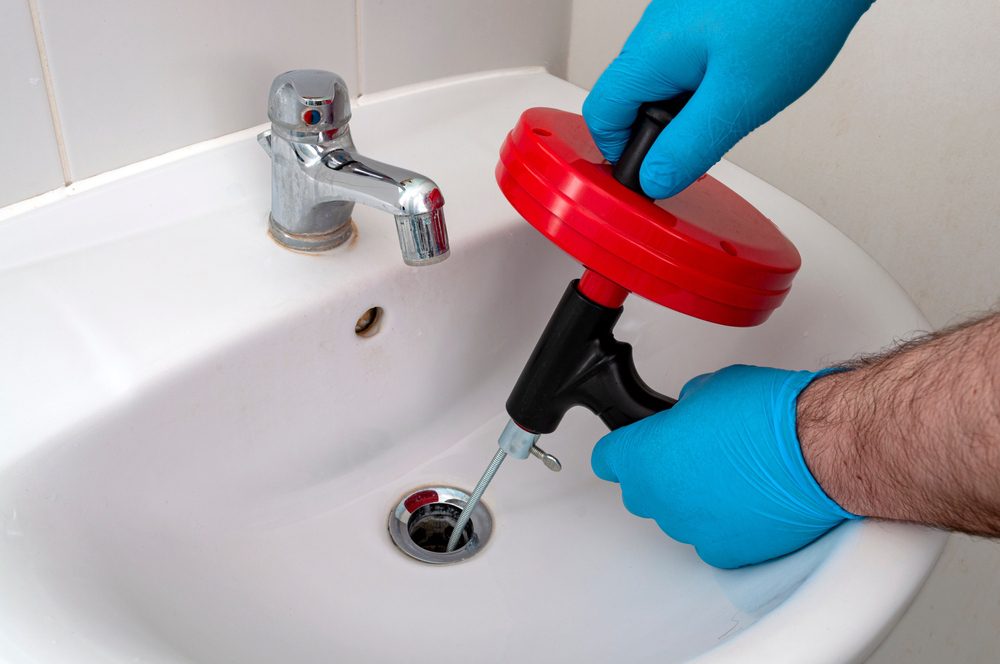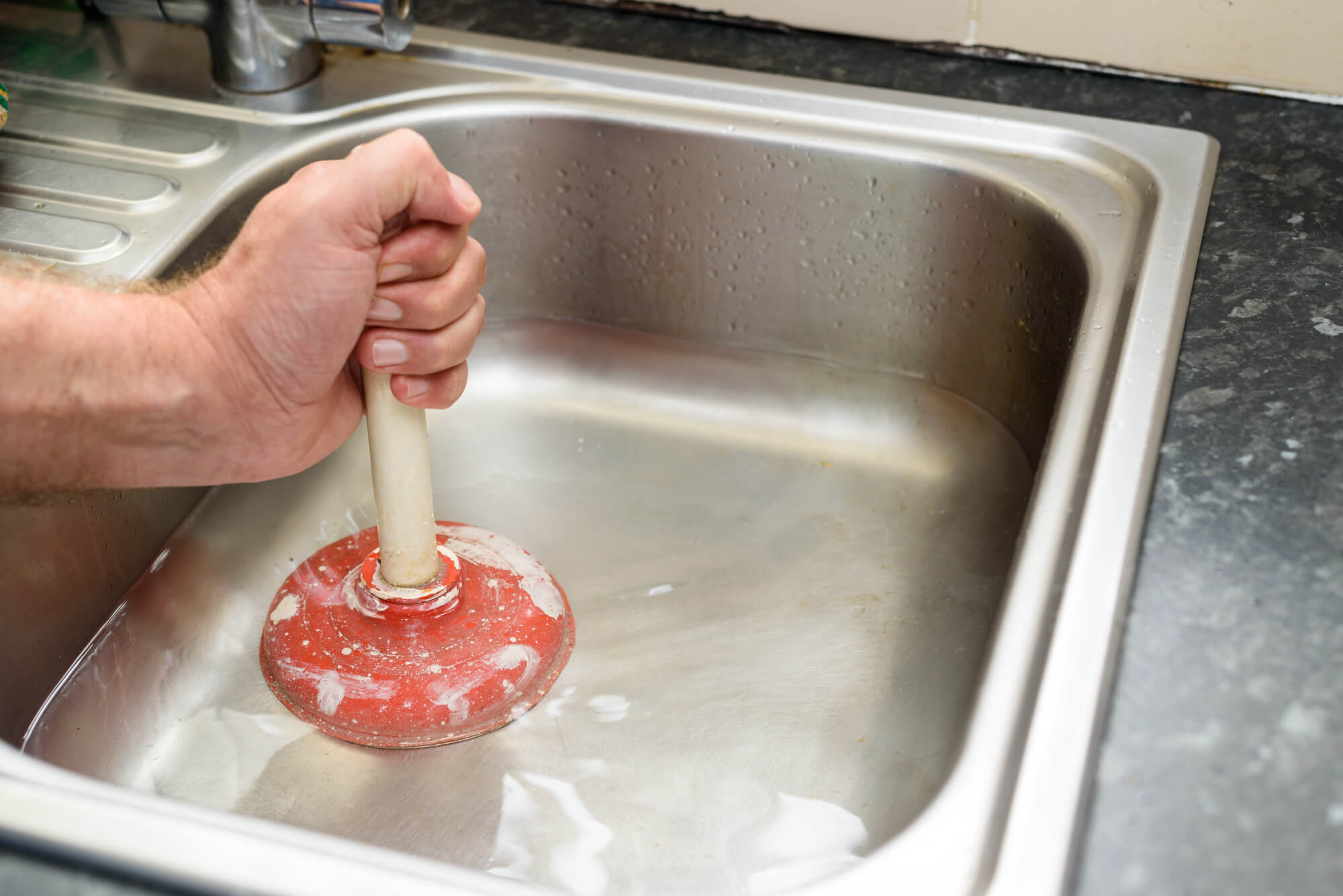Ways to Handle a Blocked Drain Prior to Calling in Experts
Ways to Handle a Blocked Drain Prior to Calling in Experts
Blog Article
The content down the page about Tips for Dealing with Clogged Drains and Sewer Lines is fairly captivating. Don't miss it.

Intro
Handling an obstructed drain can be an irritating experience, interfering with daily tasks and possibly triggering damage to your home. However, before connecting to plumbing experts, there are actions you can take to deal with the issue on your own. In this guide, we'll explore do it yourself solutions and preventive measures to tackle an obstructed drain successfully.
Recognizing the Problem
The primary step in dealing with an obstructed drain is acknowledging the signs. Slow drainage, gurgling noises, foul odors rising from drains pipes, or water backing up prevail indications of an obstructed drain. Identifying these indicators early can help prevent further issues.
Choosing the Right Pipes Solution
When picking a pipes service, consider variables such as experience, licensing, and client evaluations. Select a trusted plumbing technician with a record of high quality handiwork and clear rates practices.
Price Considerations
The expense of professional drain cleaning services can vary relying on the seriousness of the clog and the plumber's rates. Demand quotes from multiple carriers and inquire about any kind of surcharges to make sure openness and prevent surprises.
Safety Measures
When attempting do it yourself drainpipe cleaning, prioritize safety and security. Put on protective handwear covers and glasses to prevent contact with harmful chemicals or microorganisms. Never mix various drain cleansing products, as this can create harmful fumes.
Case Studies
Real-life instances show the efficiency of DIY solutions and the relevance of timely expert intervention in fixing drainpipe blockages.
Common Reasons For Obstructed Drainpipes
Recognizing the elements that add to drain blockages is important for reliable resolution. Typical culprits consist of hair, soap residue, grease, food particles, and foreign things like hygienic items or paper towels. Tree roots getting into below ground pipes can also cause substantial clogs.
DIY Solutions
For minor obstructions, a number of do it yourself solutions can be reliable. Putting boiling water down the drain can assist liquify oil and particles. Baking soda and vinegar or a combination of salt and baking soda can act as all-natural cleaners. Utilizing a bettor or pipes serpent to remove obstructions is another option.
Devices and Tools
Having the right devices on hand can make DIY drain cleaning up extra efficient. A plunger is a functional tool for getting rid of blockages in sinks, commodes, and showers. A plumbing snake or auger can get to deeper blockages, while drain cleansing chemicals can be utilized meticulously for persistent blockages.
Safety nets
To prevent future blockages, taking on preventive measures is vital. Mount drainpipe guards or strainers to capture hair and debris before they get in the pipelines. Routinely flush drains pipes with warm water to dissolve grease build-up, and prevent disposing of oil or solid waste away.
When to Call an Expert
While DIY options can resolve small blockages, specific indications suggest the need for expert support. Consistent clogs, foul odors in spite of cleaning up efforts, or numerous drains backing up all at once are warnings that require professional intervention.
Verdict
By adhering to the suggestions described in this guide, you can effectively deal with blocked drains pipes and stop future pipes concerns. Whether choosing do it yourself remedies or seeking professional assistance, timely activity is crucial to preserving a healthy plumbing system and maintaining the integrity of your home.
How to Clear a Clogged Drain Yourself (And When to Call In the Professionals)
What Can Clog a Drain
Dirt Skin flakes Hair Grease Soap scum Food Offset pipes Tree roots Small objects Mineral buildup DIY Tricks to Unclog a Drain
You can fix this! Once you have identified the source of the clog (or have a vague idea), you can try one or a combination of these fixes in order to clear your plumbing.
Wire Hanger or Snake
Untangle and clear out hair from a drainpipe with a homemade snake. Use a straightened-out wire hanger with a 90-degree angle hook to locate the clog and drag out any unwanted material.
Remember not to push the clog further down to where the wire hanger cannot reach! If you need to follow up with a plunger, give it a try. Your efforts might be more successful after it’s been wire-snaked.
If you want to get fancy and don’t have a wire hanger to spare, head to the store and pick up a hand-operated drain snake. You can get one for $10-$30. It may save you the hassle, and provide additional length to reach deep into the clogged pipe.
Plunger
A cup plunger has a suction cup attached to a wooden handle. The rubber creates a seal around the drain, and increases the pressure force of the plunger.
Plunge for 30-second increments to loosen the clog. This may need to be repeated over the course of 15-20 minutes. Once plunged, run the water to flush the remaining material out of the drain.
Remember– never use a plunger if you have used a chemical drain cleaner. These chemicals can splash up from the force of the plunger and cause serious injury or burns.
Boiling Water
Hot water can sometimes break up materials into a flushable amount. Dirt, grease, and soap buildup requires heat in order to unstick from surfaces.
Take your kitchen kettle and heat your water to a boil. Once it reaches a rolling boil, pour it directly down the drain into the blockage. Carefully follow with plunging, if necessary.
Don’t worry if this takes more than one try! It can often take multiple kettles and repeated plunging in order to clear a particularly stubborn clog.
Chemical Drain Cleaner
As a last resort, pick up a bottle of chemical drain cleaner. Drain-cleaning chemicals are potent, and not very good for the environment.
You may need to wear protective eyewear in gloves before handling your bottle of chemical drain cleaner. Follow the instructions printed on the bottle, and flush with water as soon as the instructions allow. Do not follow with plunging.
Baking Soda and Vinegar
As a safer alternative to chemical drain cleaner, baking soda and vinegar can create a chemical reaction that clears tough clogs.
Combine one cup of cleaning vinegar with one cup of boiling water, and set aside. Once you have done this, pour half a cup of baking soda down the drain. Give the baking thirty seconds to settle and cover a large portion of the problem drain.
Following the baking soda, pour down your vinegar and hot water solution. Once the vinegar and baking soda combine, the mixture will bubble and fix. Let this reaction fizzle in the drain for about an hour.
After an hour, follow with a kettle’s worth of hot water. The heat and liquid should flush out any remaining material.
When to Call a Plumber
If your DIY attempts haven’t cleared your clog drain, it’s time to call in a professional. It’s not worth losing access to your kitchen sink or high-traffic bathroom. A clog in a vital area can keep you from the things you’d rather be doing, and derail your routine.
Anytime a clog is causing water to spread is a time to call in a plumbing service. What starts out as a little bit of water can quickly grow into serious, expensive water damage.
Additionally, a serious clog can result in burst pipes or serious leaks. Make sure you know when to take it seriously!
https://myguysnow.com/how-to-clear-a-clogged-drain-yourself-and-when-to-call-in-the-professionals/

Do you really like reading up on ? Make a comment down the page. We'd be happy to listen to your ideas about this post. In hopes to see you back again later on. Do you know another individual who is fascinated by the niche? Do not hesitate to promote it. I love reading our article about What I learned from trying to deal with a clogged drain.
Book Now Report this page